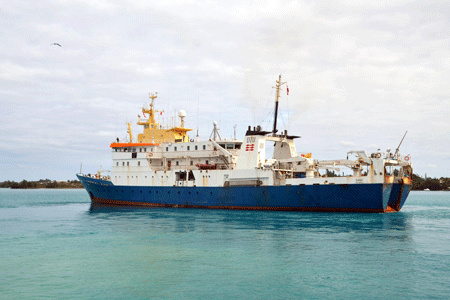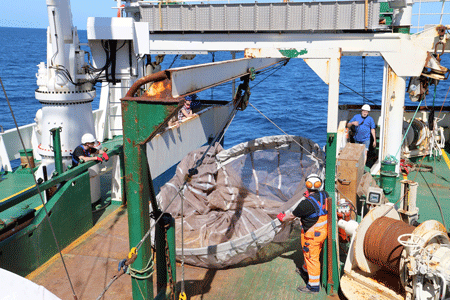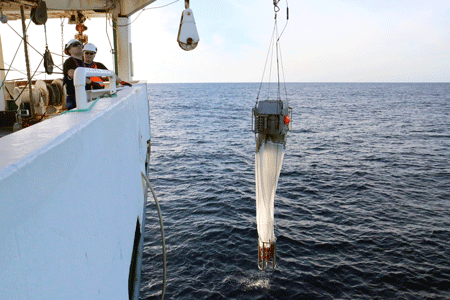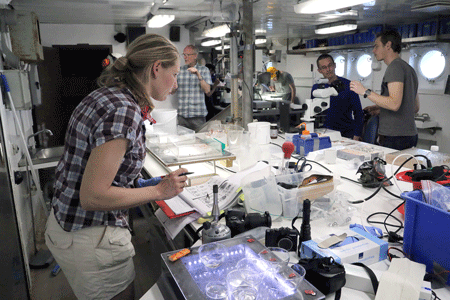In March and April, DTU’s marine research vessel, Dana, is in the Sargasso Sea to determine whether changes in the marine environment are the cause of the drastic decline in the domestic European eel.
The Danish eel population is in drastic decline. The reason for this may lie in the Sargasso Sea 6,000 kilometres off the coast of Denmark, as this is how far the European eel swims to spawn. DTU’s large marine research vessel, Dana, has therefore embarked on an expedition to the middle of the Atlantic Ocean in the hope of discovering precisely why the European eel spawns here. Once the eel larvae have hatched, they embark on the long return journey to Europe buoyed by the ocean currents—on this occasion accompanied by Dana, which sailed from Hirtshals on 28 February.
Two of the world’s 19 eel species spawn in the Sargasso Sea, namely the American eel and the European eel. One of the research projects on board is to determine whether cross-breeding occurs between the two species.
The Danish Eel Expedition 2014 is headed by DTU Aqua and co-financed by by the Danish Centre for Marine Research and the Carlsberg Foundation. In addition to the 17-man crew, a team of 21 Danish and international researchers are aboard the vessel, busy at work in Dana’s five laboratories.
You can follow the expedition on Facebook until 5 May, when Dana returns to Hirtshals.
 |
|
Dana on its departure from Hamilton. Owned by DTU, Dana is Denmark’s biggest marine research vessel.
|
 |
|
Readying the big net. The Sargasso Sea is nutrient-poor and it takes an hour to catch a bucketful of small fish, larvae and jellyfish.
|
 |
|
The multinet has five different nets that can be opened separately on their way to the surface enabling the researchers to identify the water strata where there is major biological activity and abundant marine life.
|
 |
|
Bustle in the on-board laboratories. The catch is sorted according to species and samples taken for land-based DNA analysis.
|